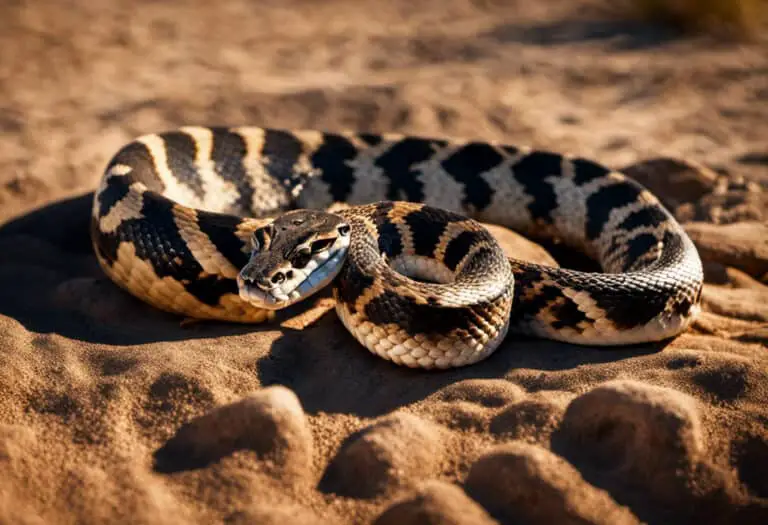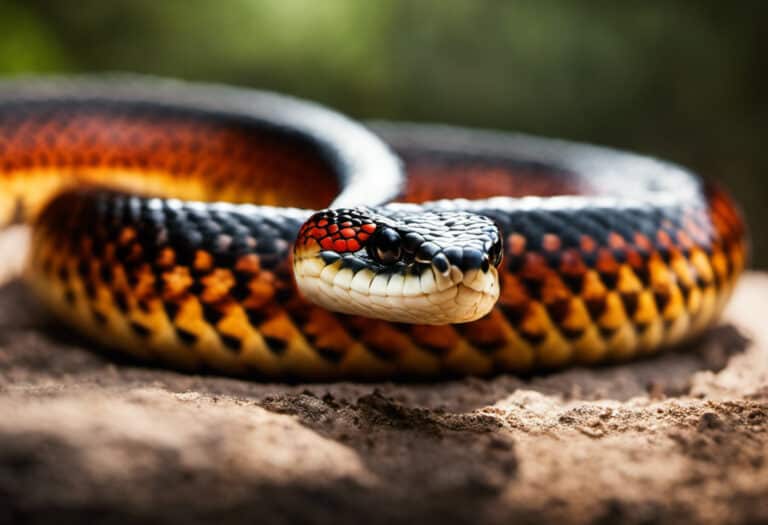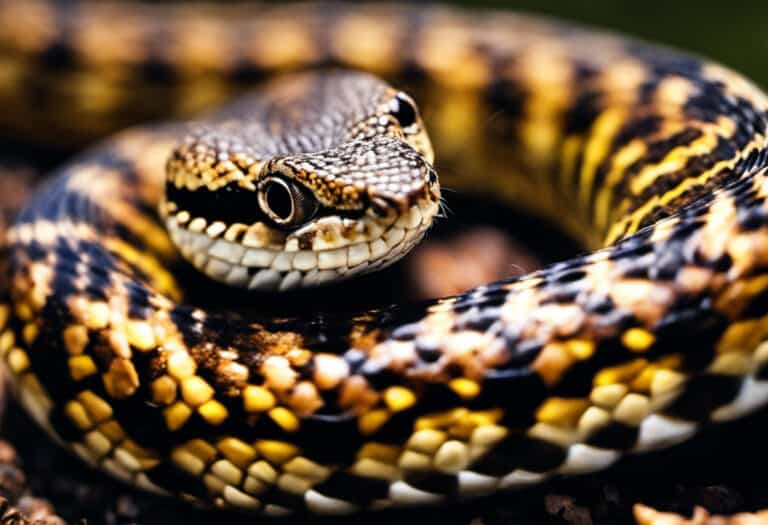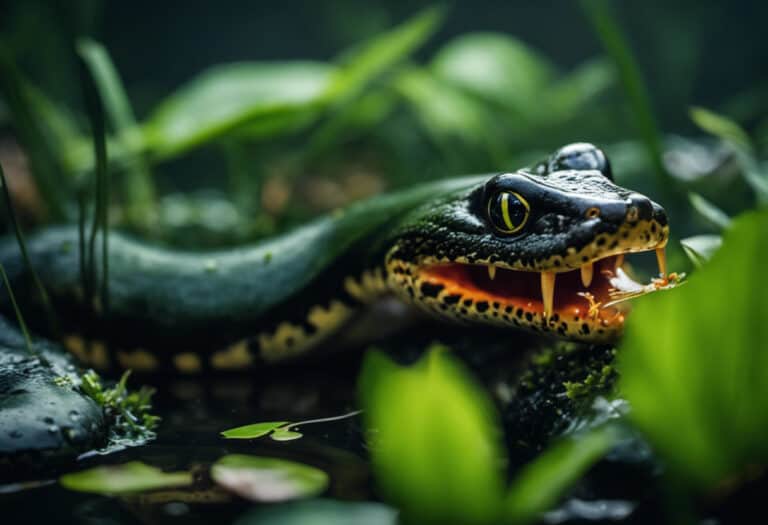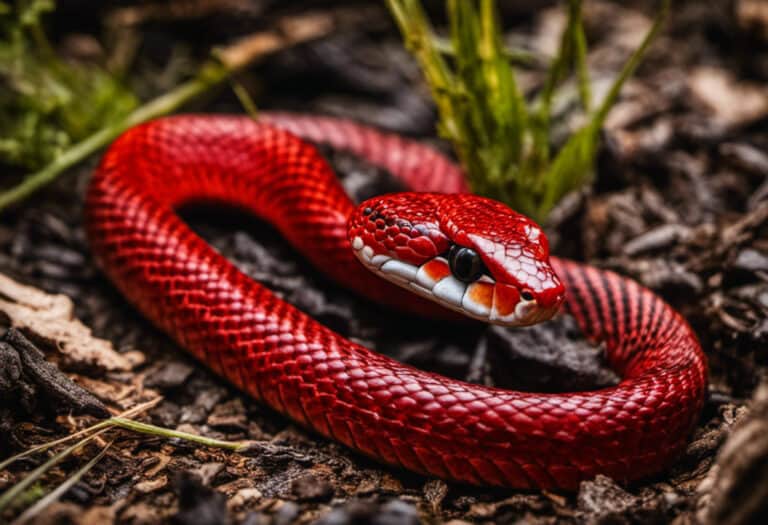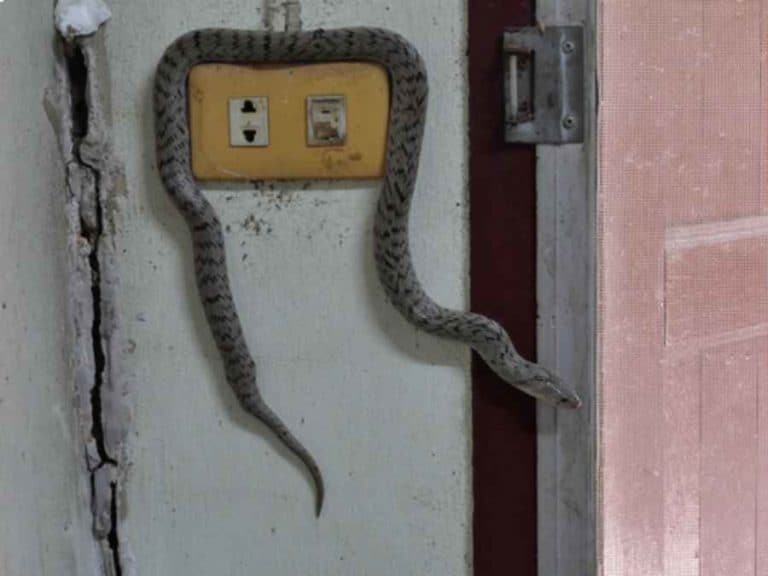Do Snakes Like Hot Weather?
Do you ever wonder why snakes slither more in the summer? Have you ever crossed paths with a snake and wondered if they enjoy the scorching weather?
In this article, we’ll delve into the captivating connection between snakes and hot weather.
As ectotherms, snakes depend on external heat sources to regulate their body temperature, making them highly susceptible to weather changes. Not only do warmer temperatures affect their behavior, but they also impact the occurrence of snakebites.
So, if you’re curious about the secrets of these mesmerizing creatures, keep reading!
Key Takeaways
- Warmer weather leads to more emergency room visits for snakebites.
- Snakebites increase by almost 6% for every rise of 0.8 degrees Fahrenheit in temperature.
- Snakes are more active during the summer season and seek cooler spots.
- Snakebites can cause devastating health, social, and economic consequences and prompt medical treatment significantly improves the chances of recovery.
The Influence of Hot Weather on Snake Behavior
During hot weather, snakes become more active and seek out cool spots to regulate their body temperature.
Snakes are ectotherms, which means their body temperature depends on the temperature of their environment. When it gets hot, snakes need to find ways to cool down. They may seek out shaded areas, burrow into the ground, or even take a dip in water.
Some snake species are more active during the early morning or late afternoon when temperatures are cooler.
As climate change continues to affect our planet, it could have significant impacts on snake populations. Rising temperatures may disrupt the balance of their ecosystems, leading to changes in their behavior and distribution.
Understanding how snakes adapt to hot weather is crucial for their conservation and for maintaining the delicate balance of our natural world.
The Relationship Between Temperature and Snake Activity
If the temperature rises, snakes become more active and seek cooler spots. Snake activity patterns are closely linked to temperature changes, as snakes are ectotherms and rely on their environment to regulate their body temperature.
As the temperature increases, snakes need to find cooler areas to avoid overheating. They may seek shade under rocks, in burrows, or in dense vegetation. Some species of snakes may also become more active during the cooler parts of the day, such as early morning or evening, when temperatures are more tolerable.
It’s important to note that snake behavior in response to heat can vary depending on the species and their specific habitat. Understanding these patterns can help individuals stay safe and avoid potential encounters with snakes during hot weather.
Snakebite Incidents: Are They More Common in Hot Weather
Snakebite incidents are indeed more common in hot weather. Warmer temperatures lead to increased snake activity, as snakes are ectotherms and rely on external temperatures for their behavior.
Additionally, during hot weather, people spend more time outdoors, increasing the likelihood of human and snake encounters.
Seasonal Variation Impact
In warmer temperatures, you can expect more snakebite incidents, with the strongest link to warmer temperatures occurring in spring and fall. Snakes, being ectotherms, are influenced by outdoor temperatures, which affect their behavior.
During summer, snakes are more active, seeking cooler spots to escape the heat. They require sunlight for heat and energy, and some species may come out in search of water and cool places.
Climate change has a significant impact on snake populations, as it alters temperature patterns and disrupts their habitats. Rising temperatures may lead to shifts in snake behavior and distribution.
It’s important to note that snakes won’t chase or bite unless provoked. If you encounter a snake, it’s best to back off quietly and create distance. Remember, snakes play a vital role in the ecosystem by controlling rodent populations.
Prevalence in Tropical Areas?
When it comes to snakebites, tropical areas have a higher prevalence due to the complex life cycles associated with snakes in these regions. In these areas, the impact on snake behavior is significant, influenced by the warm weather and diverse environmental conditions.
Here are three interesting facts about the prevalence of snakebites in tropical areas and their impact on snake behavior:
-
Tropical areas provide a favorable habitat for snakes, leading to a higher prevalence of snakebites. The warm climate and abundant vegetation attract different snake species, increasing the chances of human encounters.
-
Snakes in tropical areas exhibit specific behaviors to cope with the heat. They may become more active during the cooler parts of the day or seek refuge in shaded areas, potentially increasing the risk of encounters with humans.
-
The complex life cycles of snakes in tropical areas, including mating, nesting, and feeding patterns, can further contribute to the prevalence of snakebites. Understanding these behaviors is crucial for developing effective prevention and management strategies.
Overall, the prevalence of snakebites in tropical areas is influenced by the complex life cycles of snakes and their behaviors in response to the warm weather. Awareness of these factors can help individuals take appropriate precautions and minimize the risk of snakebite incidents.
Exploring the Seasonal Patterns of Snake Encounters
During the spring and fall seasons, you are more likely to encounter snakes due to the warmer temperatures. Snakes, being ectotherms, are influenced by outdoor temperatures and become more active when it’s hot.
They may venture out in search of water and cooler spots. Different species of snakes have different times of the day when they are more likely to be seen. It’s important to remember that snakes will not chase or bite unless provoked.
If you do encounter a snake, it’s best to calmly back off and create distance. Snakes play a crucial role in the ecosystem by controlling rodent populations. If you encounter a snake in your urban area, it’s advisable to call a professional to safely handle the situation.
| Snake Behavior During Heatwaves |
|---|
| Snakes are more active during the summer season. |
| Higher temperatures push snakes to find cooler spots. |
| Some snakes come out in search of water and cool places. |
Understanding the Frequency of Snakebite Incidents in Warm Climates
Understanding the frequency of snakebite incidents in warm climates is crucial for mitigating the risks associated with these encounters. Warmer temperatures have been shown to increase the likelihood of snakebites, with venomous and non-venomous incidents rising proportionally.
Snakes, being ectotherms, are greatly influenced by outdoor temperatures, making it important to understand the patterns and factors that contribute to snakebite occurrences in warm climates.
Snakebite Trends in Warmer Climates
Snakebite incidents tend to increase in warmer climates, with a rise of 0.8 degrees Fahrenheit in temperature resulting in almost a 6% increase in snakebites. Understanding snakebite prevention and knowing snakebite first aid are crucial in these situations.
Here are some important points to consider:
Snakebite Prevention:
- Stay at least 20 feet away from snakes to avoid encounters.
- Be cautious in trekking spots, parks, and bushy areas where snakes may be present.
- Call a professional for help in snake-related situations.
Snakebite First Aid:
- Seek immediate medical attention at a hospital if bitten by a venomous snake.
- Tying off the limb or using other methods of care before reaching the hospital is a waste of time.
- Quick action and timely hospitalization significantly improve the chances of recovery.
Factors Contributing to Snakebite Incidents
When encountering a snake, it’s important to remain calm and create distance from the snake to prevent any potential bites. Snakebite prevention is crucial in mitigating the risks associated with snake encounters.
To provide first aid for a snakebite, it’s essential to remember a few key steps. Firstly, call for medical help immediately. While waiting for medical assistance, keep the affected limb immobilized and positioned below heart level to slow the spread of venom.
Avoid applying tourniquets, cutting the wound, or attempting to suck out the venom, as these methods have been proven ineffective and may even worsen the situation. Clean the wound with soap and water, cover it with a clean cloth or bandage, and keep the victim calm and still.
These measures, along with prompt medical treatment, greatly increase the chances of a positive outcome.
Global Impact: How Hot Weather Affects Snakebite Cases Worldwide
If you live in a tropical area, it’s important to be aware of how hot weather can contribute to an increase in snakebite cases worldwide.
The global health consequences of snakebites are significant, leading to devastating impacts on individuals and communities. Snakebite prevention strategies are crucial in mitigating these risks.
Here are three important factors to consider:
Impact on Global Health:
- Snakebites are classified as a neglected tropical disease by the World Health Organization.
- They cause devastating health, social, and economic consequences.
- Between 243,000 and 414,000 snakebite victims require amputations or suffer permanent disabilities.
Influence of Hot Weather:
- Snakes, being ectotherms, are influenced by outdoor temperatures, becoming more active in warmer weather.
- Snakebites increase by almost 6% for every rise of 0.8 degrees Fahrenheit in temperature.
- Warmer temperatures lead to more emergency room visits for snakebites.
Snakebite Prevention Strategies:
- Prompt medical treatment significantly improves the chances of recovery.
- Seeking immediate medical attention at a hospital is crucial.
- Proactive measures, such as staying away from snakes and calling professionals for help, can reduce the risk of encounters.
Frequently Asked Questions
How Do Snakes Behave During Hot Weather?
During hot weather, snakes tend to be more active. They seek cooler spots and sunlight for heat and energy. Different species have varying times of the day when they venture out.
Does Hot Weather Make Snakes More Aggressive?
Hot weather can influence snake behavior, potentially increasing aggression levels. However, it is important to note that snakes do not become aggressive without provocation. Understanding snake behavior and taking necessary precautions can help ensure safety.
Are Snakebite Incidents More Common During Hot Weather?
Snakebite incidents are more common during hot weather. Take precautions to prevent snakebites, such as staying away from snakes and calling professionals for help. If bitten, seek immediate medical treatment for the best chance of recovery.
Do Snakes Hibernate During Hot Weather?
Snakes do not hibernate during hot weather. They may seek shade to regulate their body temperature. While in hibernation, snakes do not eat.
How Does Hot Weather Impact Snakebite Cases Globally?
Hot weather can increase snakebite cases globally. Warmer temperatures make snakes more active, pushing them to find cooler spots. Snakebites have devastating consequences, causing permanent injuries and disabilities. Seek immediate medical attention if bitten.
Conclusion
So there you’ve it, snakes and hot weather go hand in hand. As ectotherms, snakes rely on the heat from their surroundings to regulate their body temperature, making them more active during the summer months.
However, this increased activity also means a higher risk of snakebite incidents, as rising temperatures can lead to more encounters between snakes and humans.
It’s important to understand the behavior of snakes and take necessary safety precautions when encountering them in hot weather.
Stay informed and stay safe!
